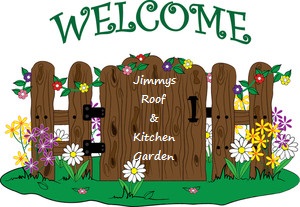8 Common Mistakes To Avoid When Buying Plants From Nursery | Gardening Mistakes
See how you can buy the best plants in a nursery or garden center by avoiding these 8 common mistakes.
Must remember these tips when buying plants at a garden center or nursery. These tips will help you in choosing the best plants that’ll survive and thrive after you buy them.
1. The quality of the garden center in general
You can get an initial idea of the quality of plants from the first general impression of the garden center or nursery you are visiting. See if there are many pots fallen and there are many kinds put through one another or if the care has not been optimal in recent days or weeks. Also, see the quality of soil in which plants are available or if the plants are bit overpriced. Avoid purchasing plants from such place.
2. The leaves tell you more
You can easily find out how healthy the plant is from its leaves. To learn how to read plant leaves.
Plants with limp, wilted, yellow, brown or black leaves mean that the plant is either thirsty or suffering from a disease or it is root bound. You should avoid buying such plants, buy plants that are healthy with lush green and perky foliage.
3. Look for pests and diseases
When choosing plants from a nursery, look at them closely for the presence of pests or diseases. The pests or insects are usually hidden on the underside of the leaves or at the growing tips of the plants. Look out for common pests like aphids, scales, mites etc. You should also look if the plant has holes on the leaves, black spots, distortion, blisters or feel that the leaves are sticky (honeydew secreted by aphids).
Never buy infected plants because once they enter in your garden, the pests in them will spread quickly to infest other weak plants you have.
4. Avoid leggy and lanky plants
Leggy plants should also be avoided. These plants may have grown up in insufficient light or may be a victim of over-fertilization and will invite pests and diseases to your garden. They may also break easily in wind and or at the time of handling. Instead, buy plants that are grown healthy and have a well-branch structure. These plants are robust, bushy and are generally pests and disease free.
5. Roots will tell you everything
Half the secret to growing healthy plants is having healthy roots. When you choose to pick a plant to check out its roots, examine the color of the roots. Never choose a plant if its roots are soft, brown or easily fall apart when you touch or pull them slightly. Also, remember some plants have fine roots and you have to examine them with care.
6. Ask, ask and ask
Don’t be afraid to ask nursery employees about which plants would adapt best in your garden and their growing requirements and conditions. Tell them about the dimensions of your garden so that they can help in choosing the best one.
7. Don’t buy plants in full bloom
Don’t fall in a temptation of buying flowering plants in full bloom. Instead, choose plants with healthy foliage and vigorous growth with many buds to open.
8. Check out the weeds
If there are weeds in the pot, it is not only indicative of poor maintenance of the plant, but worse is the fact that the weeds for a long time used the nutrients of the desired plant. If there is an option avoid buying such plant. If in case you’re buying that plant remove the weed carefully before planting or else it will spread in your garden.
























